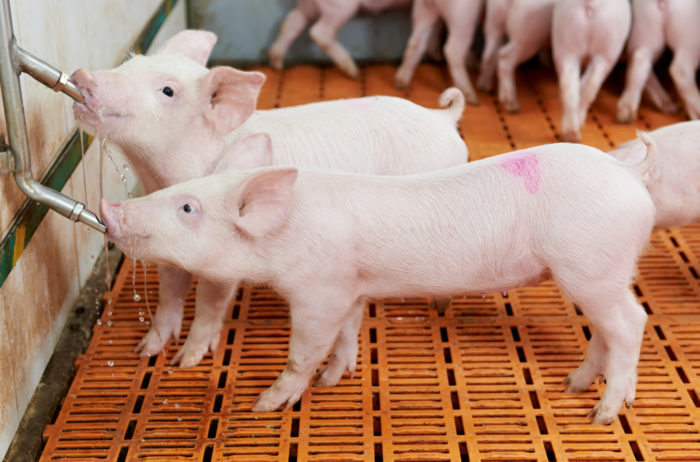Comparison of Swine Drinkers and Their Effects On Water Use
Water is one of the most important natural resources for plant and animal growth in the farming industry. Farmers regularly ask questions about water. They ask questions like; How much water do I need? Where am I going to get water from? Will this spot be a good place to put a well? The answers can affect their operation as they pay water bills, electricity bills, monitor animal growth rates and apply animal waste.
One of the more common livestock in North Carolina is swine. When setting up or retrofitting a swine facility one of the inevitable questions a farmer is faced with is: How should I get water to my animals? This article will focus on various drinkers and their impact on water consumption.
Most common drinkers are Nipple drinkers, Swing drinkers, Bowl Drinkers, and Wet/Dry feeders. We will address the functions of these drinkers and how each will affect water use amounts.
Nipple Drinkers
As you can see in the picture; nipple drinkers are pretty simple. The pig puts its mouth around the nozzle and drinks by moving the metal rod in the middle which allows the water to flow. This method is commonly used in large swine facilities by new and beginning farmers. However, in the picture you can see not all of the water is consumed by the pig. Water is dripping down the animal’s face and leaving through the sides of the mouth. And because the pig’s water and manure fall through the same slatted floors, there are higher amounts of wastewater to be land applied. Of the four swine drinkers, the nipple drinkers waste the largest amount of water. These are the simplest to install and operate which is why many farmers use them.
Swing Drinkers
Swing drinkers work essentially the same as nipple drinkers except they limit the angle at which the pig can approach the drinker and they move with the animal’s head while in use. The pig needs to keep its snout between the two metal slats as it drinks. Like other drinking systems they will need to be adjusted throughout the life of the animals. In a winter trial the volume of wastewater was reduced by 14% when compared to nipple drinkers. This 14% reduction in wastewater directly correlates to a savings in water.
Bowl Drinkers
Bowl drinkers are one of the simpler drinkers a farmer can switch to. However, much like swing drinkers, they require some work and maintenance. Bowl drinkers encompass the animals head and dispense water when the animal moves a lever allowing the water to flow. Bowl drinkers were shown in a study to reduce water usage amounts by 25% when compared to swing drinkers. They have relatively low maintenance but they need to be adjusted for animal height as the pigs grow.
Wet/Dry Feeders
Wet/Dry feeders are a great way to save water because like bowl drinkers they have the water enclosed on most sides. The water and food are combined and kept within the feeder and greatly reduce wasted water. In tests, they have shown to reduce wastewater by 30% when compared to nipple drinkers. Some issues associated with Wet/Dry feeders are that they are more complicated to clean and smaller pigs can have issues with the feeder. Newly weaned pigs have trouble reaching the food sometimes so these are best used for larger animals.
Conclusion:
Switching drinkers from nipple drinkers to either bowl drinkers or swinging drinkers will reduce freshwater demand and as a result, also reduce the amount of wastewater produced. Switching the drinkers and feeders to wet/dry feeders will achieve the same purpose. Changing drinkers or feeder will require installation and some additional hours for maintenance and upkeep. The reduction of wasted water will reduce the cost of operating the farm and will save time down the road when it comes time to apply wastewater. This is one of many difficult choices a farmer will have to make that will affect their bottom line.
This was written by Adam Gaines. Adam has a lot of experience with livestock especially on the farm. Adam is constantly meeting with Producers on their farms as he helps them solve waste management issues.
Links and References:
http://porkgateway.org/resource/feeding-systems-for-swine/
http://porkgateway.org/resource/water-recommendations-and-systems-for-swine/
http://www.nationalhogfarmer.com/facilities/refining-feed-and-water-delivery
https://thepigsite.com/articles/water-systems-for-growing-swine

